NASA is the gold standard in human space exploration, engineering excellence, and scientific discovery. Its influence extends far beyond American borders.
NASA has shaped the modern space industry, spurred international collaboration, and inspired the rise of an entirely new generation of space agencies and private players.
Its legacy is staggering in scale and impact. The agency has conducted over 200 crewed missions and launched hundreds of robotic explorers. Its Artemis program (a $93 billion effort to return astronauts to the Moon) stands as one of the most expensive and ambitious space exploration projects in human history. [1]
However, NASA is no longer the only major player in celestial pursuits. In the 21st century, a new global space race has emerged, with more than 100 countries operating satellites and over 70% of orbital launches now conducted by private companies rather than national governments.
As the boundaries between government, commercial, and international space efforts blur, NASA stands at the center of a rapidly growing and highly competitive space ecosystem.
I’m presenting top NASA competitors that are no longer just followers — they are innovators in their own right, pushing the limits of technology, cost efficiency, and scientific ambition.
Did you know?
According to the McKinsey report, the global space economy is expected to reach $1.8 trillion by 2035, up from $630 billion in 2023. [2]
This figure includes core space uses like satellites, rockets, and GPS, as well as indirect ones where space tech supports other industries. For example, Uber depends on satellite signals and phone chips to connect drivers and riders.
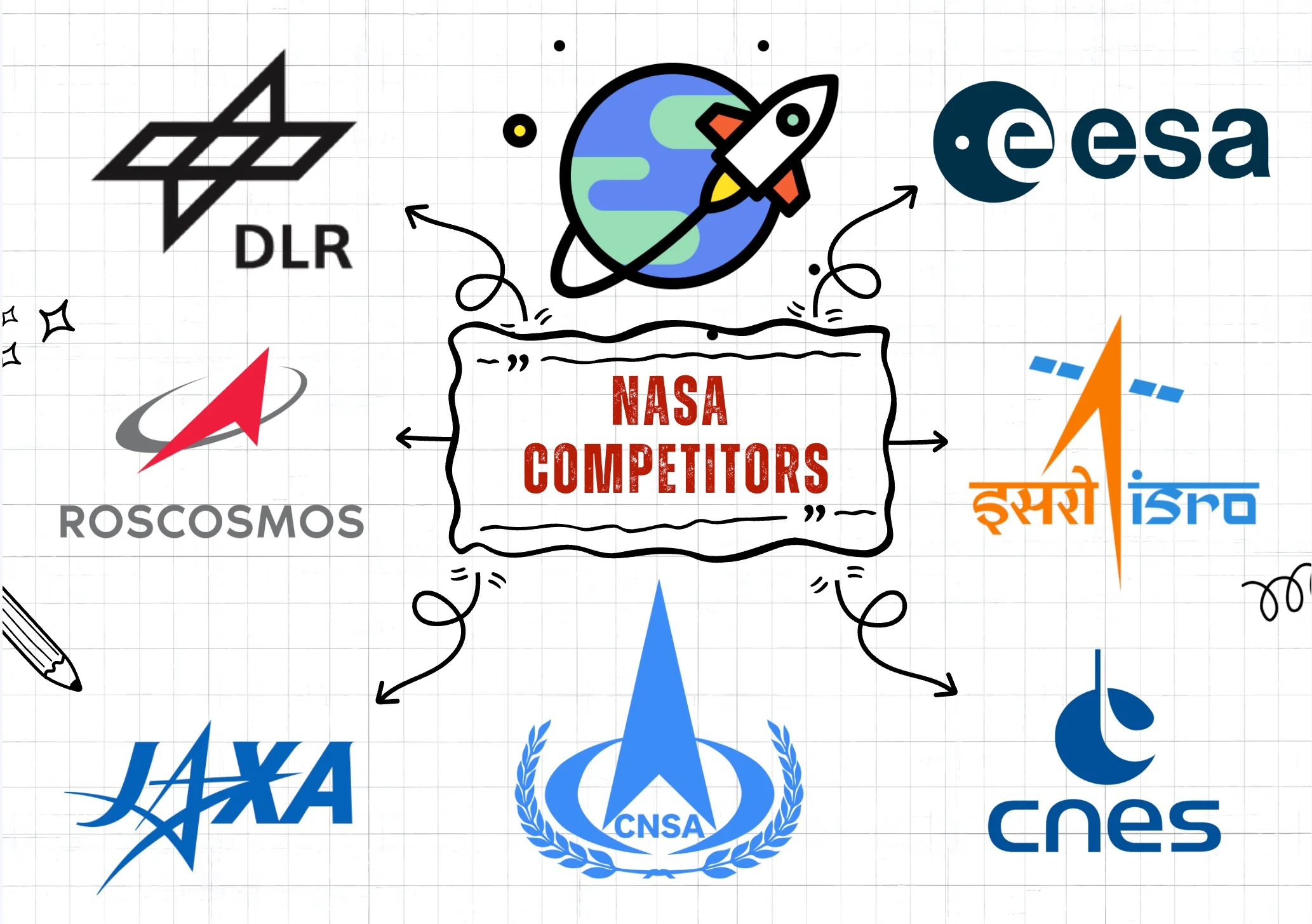
Table of Contents
13. UAE Space Agency (UAESA)
Founded: 2014Headquarters: Abu Dhabi, United Arab Emirates
Budget: $12 billion (over a 10-year period)
Competitive Edge: Strong national strategy & government backing
The UAE’s entry into space exploration has been rapid and ambitious. In less than a decade since its founding, the UAESA has launched several satellites, including DubaiSat-1, DubaiSat-2, KhalifaSat, and the Hope Mars Orbiter.
The Hope Probe entered Martian orbit in 2021, making the UAE the first Arab nation and the fifth globally to reach Mars. It was developed in collaboration with NASA, the University of Colorado Boulder, and other US institutions, showcasing the UAE’s ability to coordinate complex international missions. [3]
Over the past decade, the UAE has invested nearly $12 billion in its space sector. The government also created a National Space Fund worth about $817 million to support both Emirati and international companies working in space engineering, science, and applications.
The country has introduced the National Space Strategy 2030 and the National Space Investment Plan, which outline long-term goals through 20+ programs and 80+ initiatives.
They are also planning the MBR Explorer mission to the asteroid belt, set to launch in 2028, which will study multiple asteroids and may use Venus or Mars for gravity assists.
12. Brazilian Space Agency
Founded: 1994Headquarters: Brasília, Brazil
Annual Budget: ~$25 million
Competitive Edge: Geographical advantage & launch site potential
The Brazilian Space Agency manages key facilities such as the Alcântara Launch Center (one of the world’s most strategically located spaceports near the equator), which allows more efficient orbital launches due to Earth’s rotational advantage.
To be more specific, this position provides up to 30% more fuel efficiency compared to a higher-latitude launch site, giving Brazil an enormous logistical advantage in the global launch services market. [4]
The agency works closely with Brazilian universities and aerospace firms, such as Embraer and Visiona, fostering technology transfer and innovation in satellite manufacturing and propulsion systems. In 2021, the agency launched its first fully domestically designed and built Earth observation satellite.
Its focus on sustainability and socio-economic impact differentiates it from NASA’s science-heavy orientation. The agency’s space projects are directly tied to Brazil’s national interests — monitoring the Amazon rainforest, tracking urbanization, and supporting agriculture.
11. Iranian Space Agency (ISA)
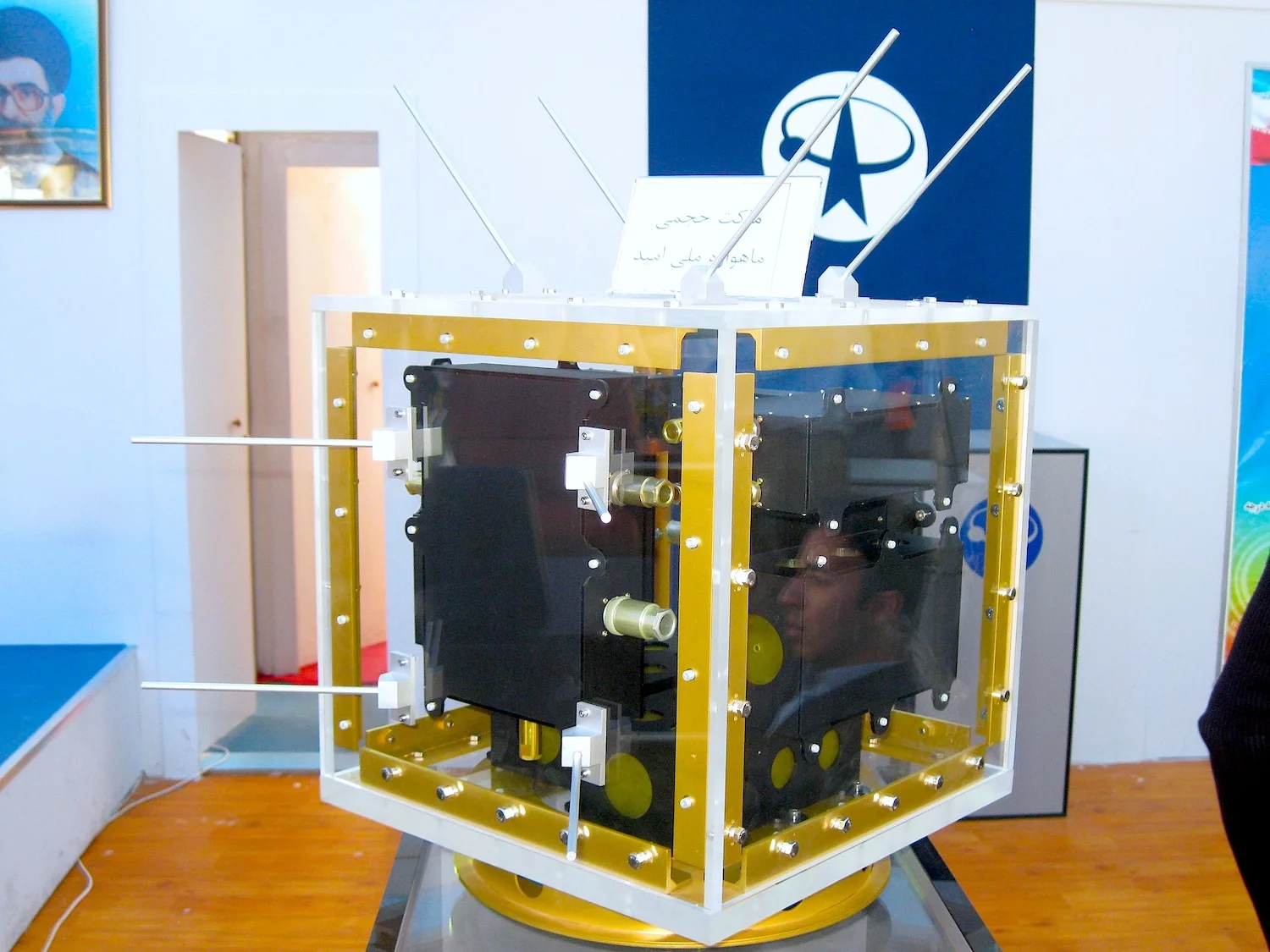 Iran’s first satellite (Omid) was placed into orbit with its own launcher
Iran’s first satellite (Omid) was placed into orbit with its own launcher
Headquarters: Tehran, Iran
Annual Budget: $222 million+
Employees: 500+
Competitive Edge: Strong push for self-reliance & domestic manufacturing
The creation of ISA was a key step in Iran’s goal of developing its own space access. Its mission is to boost the country’s scientific research, commercial space activity, and defense capabilities.
Its rivalry with NASA lies less in technological parity and more in ideological and regional competition, proving that developing nations can pursue independent space programs despite external limitations.
Over the years, the agency has launched several indigenously built satellites, including Omid (2009), Rasad (2011), Navid (2012), and Fajr (2015), using domestically developed launch vehicles. These milestones made Iran one of the few nations in the Middle East with orbital launch capability.
ISA has launched more than 25 satellites since its inception, ranging from Earth observation and scientific research satellites to communications platforms. It is also investing heavily in its Simorgh and Qased rocket programs, which can carry payloads of 50–250 kilograms into orbit.
10. Korea Aerospace Administration (KASA)
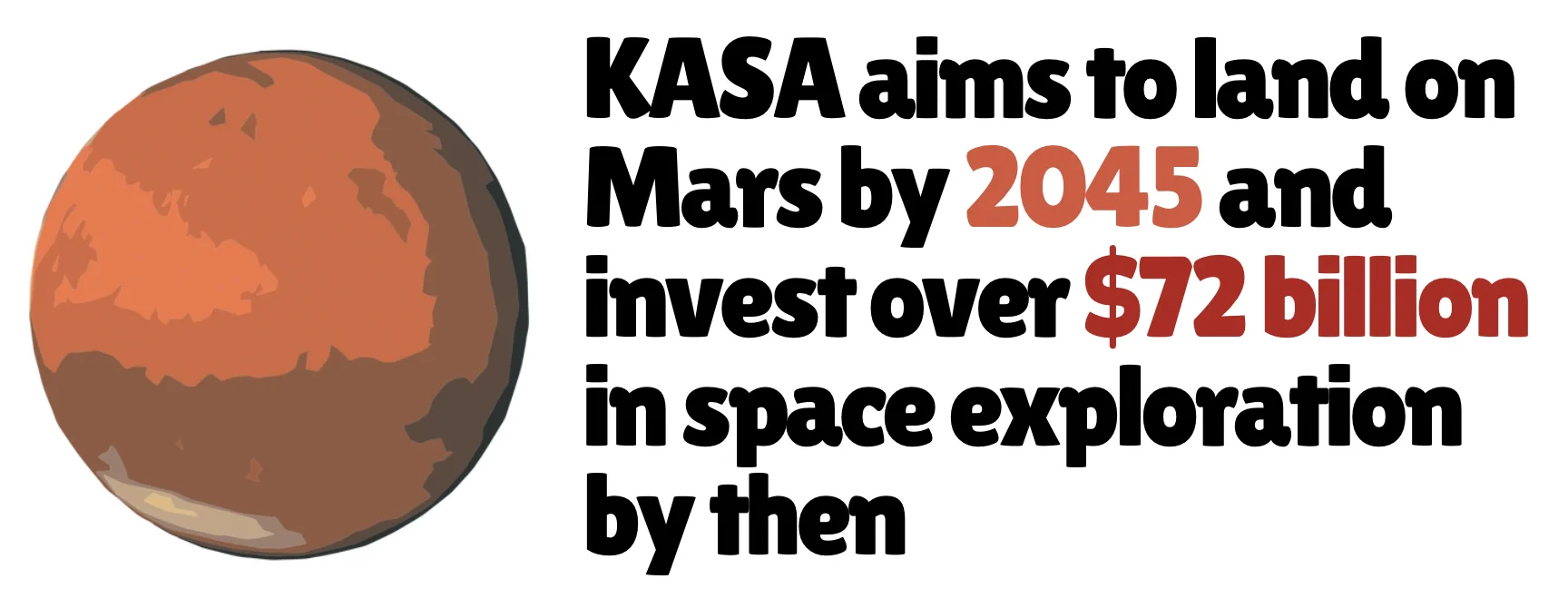
Headquarters: Gyeongsangnam-do, South Korea
Annual Budget: $560 million+
Employees: 300+
Competitive Edge: Rapid development cycles
KASA was established in 2024 to coordinate, unify, and advance South Korea’s space ambitions. Prior to KASA, space and aerospace responsibilities in the country were more fragmented — handled by the Korea Aerospace Research Institute (KARI), the Korea Astronomy and Space Science Institute (KASI), and various government ministries.
KARI, in particular, is recognized for developing South Korea’s first domestically produced space launch vehicle, the Nuri (KSLV-II) rocket, which successfully reached orbit in 2021. A year later, they launched KPLO (Korea Pathfinder Lunar Orbiter), marking South Korea’s first step toward lunar exploration. [5]
The agency also invests in aeronautics research, including the development of the Korean Multipurpose Satellite (KOMPSAT) series, unmanned aerial vehicles, and next-generation (electric) propulsion aircraft.
Unlike NASA’s vast structure and bureaucracy, KASA benefits from compact organization and quicker decision-making cycles, allowing it to move faster in small-satellite development and autonomous flight systems.
Their long-term goals are ambitious. They plan to land a Korean spacecraft on the Moon by 2032, develop reusable launch vehicles by around 2035, and attempt a Mars landing by 2045. In the meantime, they’re also working on creating their own GPS-style navigation system and exploring Lagrange points for future scientific missions.
9. Arianespace
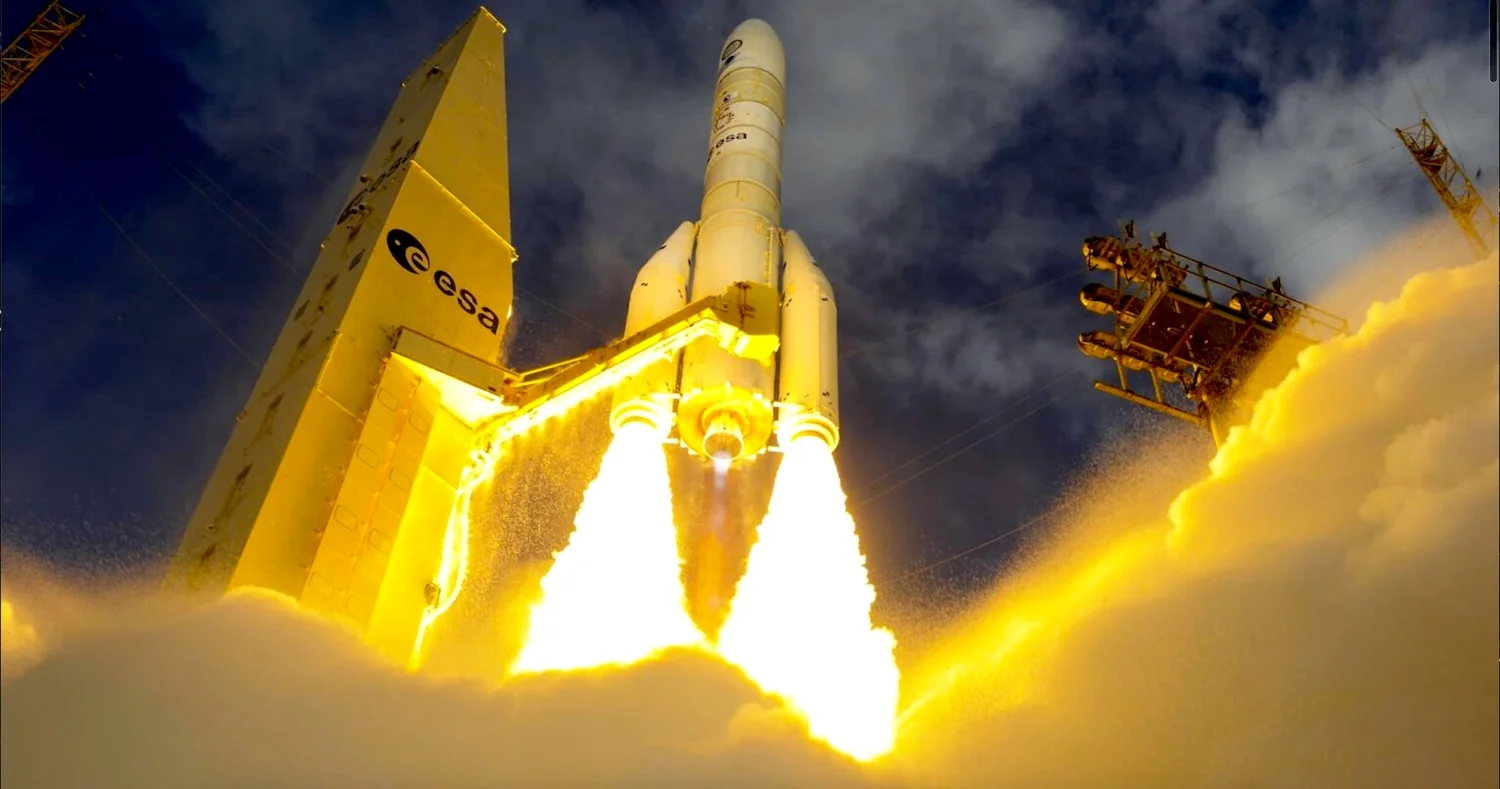 Ariane 6 | The new-generation launcher
Ariane 6 | The new-generation launcher
Headquarters: Paris, France
Employees: 180+
Competitive Edge: Long track record and Wide launch capability
Arianespace is the world’s first commercial launch company, emerging from France’s National Centre for Space Studies (CNES) initiative to develop Europe’s independent access to space.
It manages and markets satellite launches for institutional, defense, and commercial customers. More specifically, Arianespace handles the mission preparation, customer relations, launch operations (vehicle integration, payload prep, etc.), and the full launch campaign from its base in French Guiana.
While Arianespace is not a government space agency, it competes with NASA in the commercial launch services sector — particularly in areas where NASA contracts private companies for orbital missions.
Its flagship launch vehicles — the Ariane 5 and now its successor Ariane 6 — are known for their exceptional reliability, with a success rate of over 95%. The company also operates the Vega and Vega-C rockets, designed for smaller payloads.
Arianespace has launched more than 1,100 satellites since its inception, serving over 150 customers in 50+ countries. It also has a healthy order book: 29 missions are booked for Ariane 6 alone, including a large contract (18 launches) for Amazon’s Project Kuiper.
8. Canadian Space Agency (CSA)
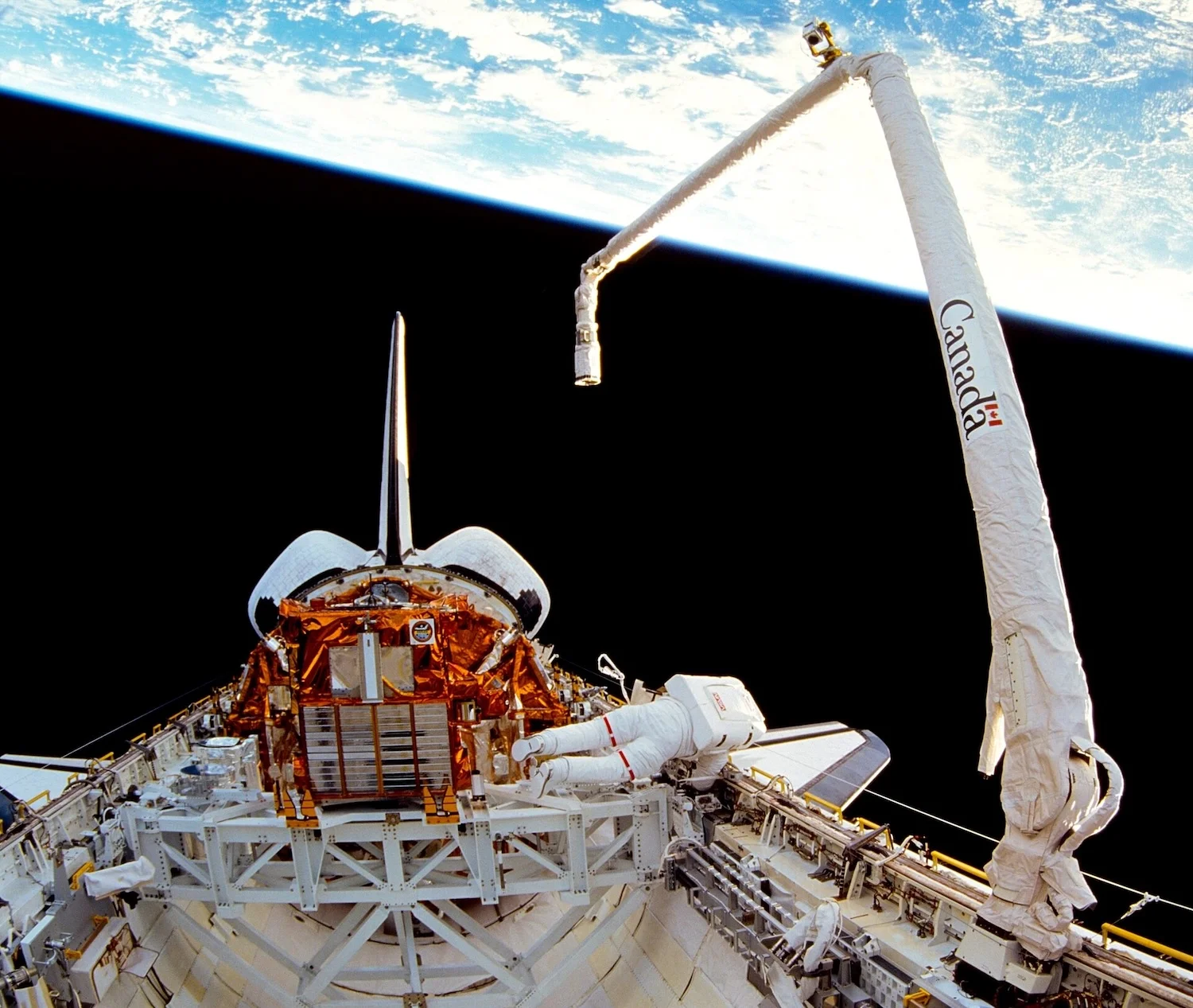 Canadarm2 robotic system on board ISS
Canadarm2 robotic system on board ISS
Headquarters: Quebec, Canada
Annual Budget: $440 million+
Employees: 900+
Competitive Edge: Expertise in space robotics and radar imaging
CSA has built a global reputation for excellence in robotics, satellite communications, and space science, making Canada one of the few nations with a significant and consistent presence in international space missions.
Its most famous contribution to space history is the Canadarm series, iconic robotic systems used on the Space Shuttle, the International Space Station (ISS), and soon on the Lunar Gateway as Canadarm3.
The Canadarm technology is so critical that NASA considers CSA one of its most trusted technology partners. However, this collaboration also reflects a form of indirect competition, as CSA’s success in automation and robotic control systems sets the benchmark for NASA’s own in-house developments.
CSA is also heavily involved in Earth observation (RADARSAT series), satellite communications (Anik series), and astronomical science missions.
The RADARSAT Constellation, launched in 2019, continues Canada’s leadership in synthetic aperture radar (SAR) imaging, providing global environmental and security data. These systems play an important role in climate monitoring, Arctic surveillance, and disaster management.
Beyond exploration, CSA also focuses on developing Canada’s commercial space ecosystem. It supports companies like MDA, GHGSat, and NorthStar Earth & Space, encouraging innovation across AI, robotics, and satellite data analysis.
In 2025, the CSA awarded CAD 13.2 million to 19 projects led by 17 Canadian companies/institutions to develop space technologies. Many of these technologies are designed for both civilian and defence use. [6]
7. National Centre for Space Studies (CNES)
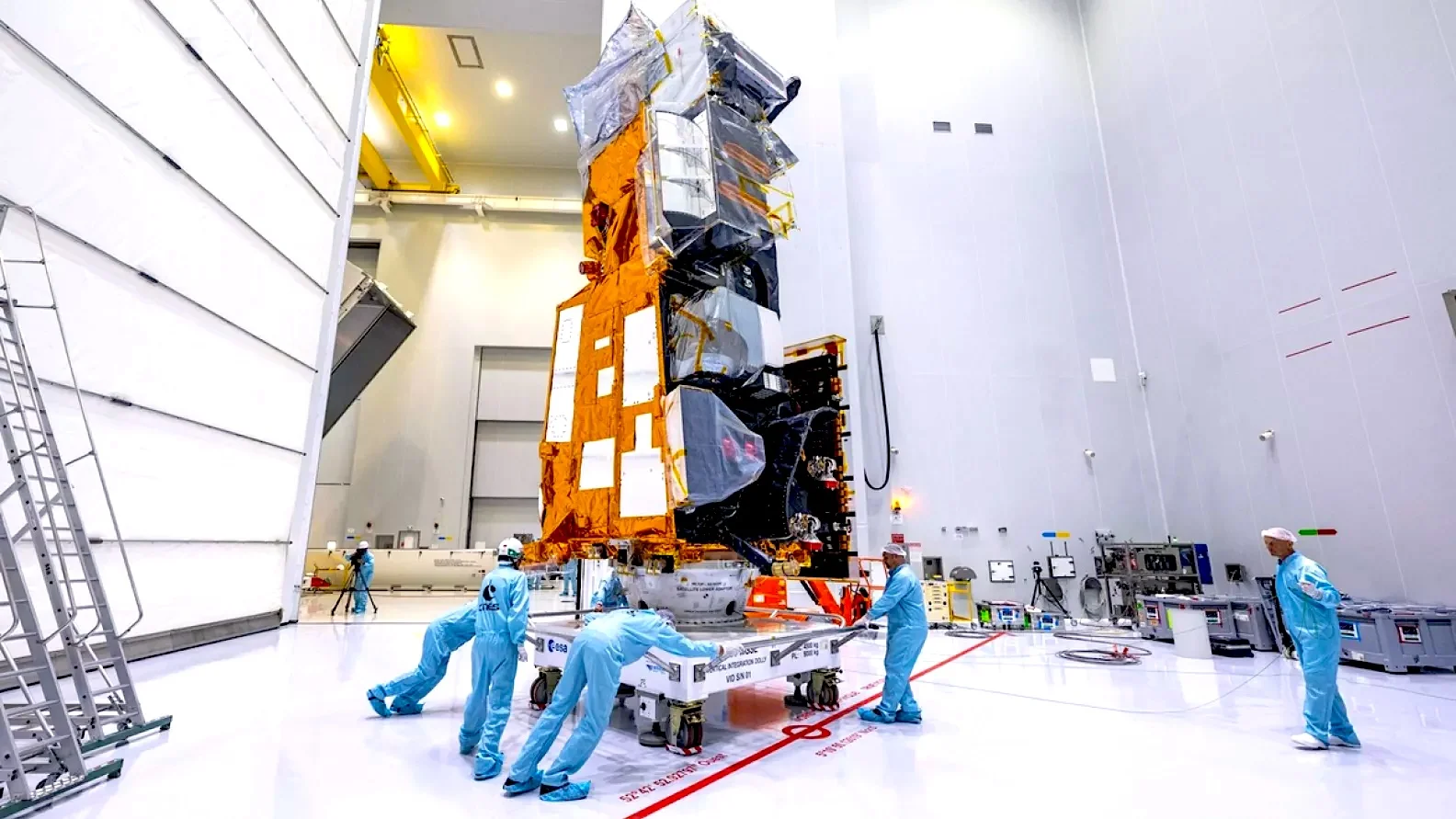 The Metop-SGA1 satellite in the clean room, developed by CNES
The Metop-SGA1 satellite in the clean room, developed by CNES
Headquarters: Cologne, Germany
Annual Budget: $3.52 billion+
Employees: 2,400+
Competitive Edge: Space sustainability and debris mitigation
CNES employs 2,400 highly skilled engineers, scientists, and researchers, and collaborates closely with Airbus Defence and Space, ArianeGroup, and Thales Alenia Space. It is involved in around 160 science missions and projects.
Some of its major developments and missions include Ariane 5 and 6 rockets, SPOT Earth observation satellites, Helios military satellites, and Mars exploration missions such as ExoMars and SEIS (the seismometer on NASA’s InSight lander). These accomplishments highlight CNES’s strength in both scientific and defense-related aerospace programs.
Collaborative missions with NASA, such as Jason, TOPEX/Poseidon, and Surface Water and Ocean Topography (SWOT), demonstrate CNES’s capability to operate on equal technical footing with its American counterpart.
The competition arises in areas like launch services, planetary exploration, and data commercialization, where CNES-led projects (often through ESA or ArianeGroup) offer Europe’s alternative to NASA and US commercial space ventures.
CNES has heavily invested in next-gen launch vehicles (Ariane 6, Vega-C) and small-satellite technologies — an area where NASA’s commercial partners like SpaceX have dominated.
In recent years, the agency has focused on climate change monitoring, space sustainability, satellite data services, and new launch systems to support Europe’s competitiveness in a rapidly evolving global space market.
It is at the forefront of space sustainability and debris mitigation, with programs dedicated to deorbiting satellites, improving propulsion systems, and promoting cleaner space technologies. [7]
6. German Aerospace Center (DLR)
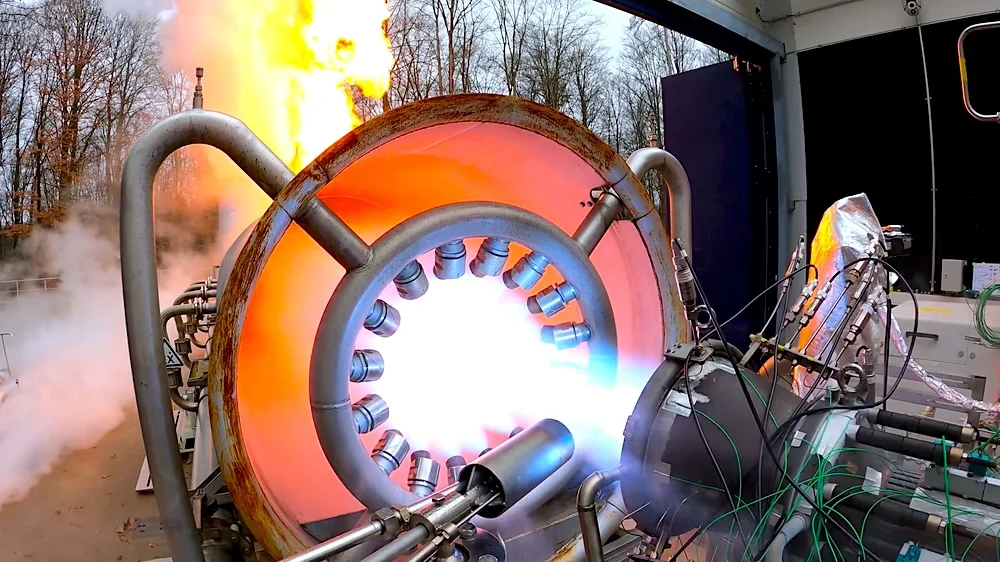 AI-assisted reusable rocket engine, Lumen, developed by DLR
AI-assisted reusable rocket engine, Lumen, developed by DLR
Headquarters: Cologne, Germany
Annual Budget: $1.5 billion+
Employees: 10,320+
Competitive Edge: Deep integration with the European industrial base
DLR serves as both the national space agency and a major engineering and scientific research institution, employing over 10,300 professionals across its 55 research institutes and test facilities in 30+ locations throughout Germany.
DLR integrates academic excellence with industrial collaboration, working alongside universities, startups, and global aerospace companies like Airbus and OHB Systems. This model allows the agency to function as both a scientific think tank and a technological powerhouse.
The agency’s work spans robotics, satellite technology, energy systems, aeronautics research, and planetary exploration. It has played a crucial role in advancing European space capabilities, contributing to landmark projects such as the Ariane launch program, Columbus module on the International Space Station, Rosetta comet mission, and Mars Express.
In recent years, they have prioritized sustainability and green technology, with growing investments in hydrogen energy systems, low-emission aircraft, and climate and environmental monitoring.
As part of both ESA missions and independent German-led programs, DLR primarily competes with NASA in areas of robotics, satellite development, planetary science, and sustainable flight technologies.
In scientific research, it competes in publications, technological patents, and satellite data systems, where it often ranks among the top five space research institutions worldwide.
5. Indian Space Research Organisation (ISRO)
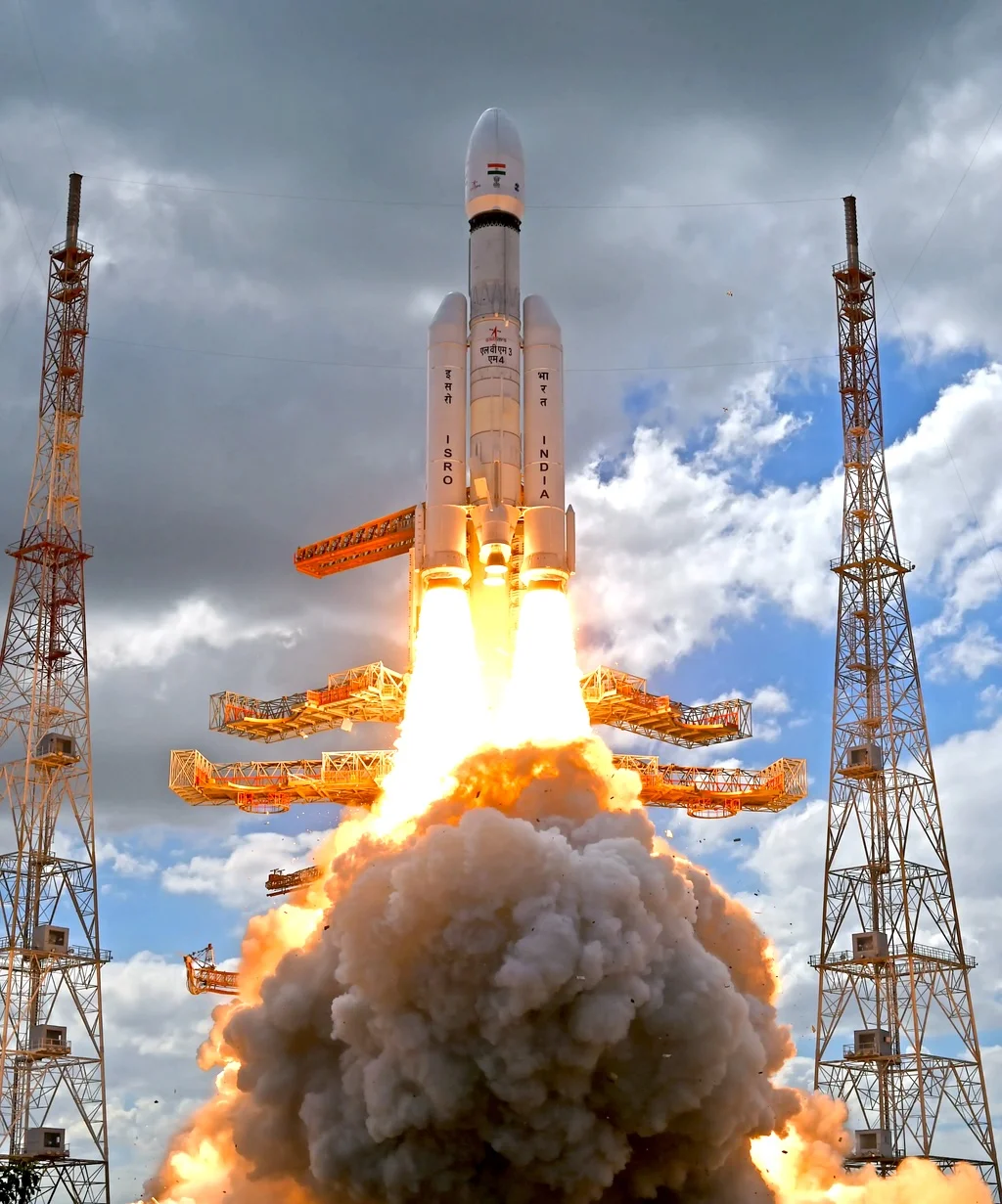 Chandrayaan-3 launched in 2023
Chandrayaan-3 launched in 2023
Headquarters: Karnataka, India
Annual Budget: $1.6 billion+
Employees: 20,000+
Competitive Edge: Reliable launch system and Cost efficiency
ISRO represents India’s technological vision, scientific innovation, and self-reliance in space exploration. Despite operating on a fraction of the budgets of major space powers, ISRO has achieved feats that place it among the world’s top five space agencies.
ISRO’s success is rooted in its ability to achieve complex space missions at exceptionally low cost. Its annual budget is less than one-tenth of NASA’s and yet delivers a comparable range of achievements — from lunar landings to interplanetary probes and large-scale satellite programs.
Its Chandrayaan program placed India among the few nations to achieve soft landings on the Moon. In 2023, Chandrayaan-3 made history by landing near the lunar south pole, becoming the first country to do so. [8]
The Mangalyaan (Mars Orbiter Mission) in 2014 made India the first Asian country to reach Mars orbit, and the first nation globally to succeed on its first attempt, at a cost of just $74 million — cheaper than many Hollywood movies.
ISRO is also a major player in satellite communications, navigation, and Earth observation. Its INSAT and GSAT series power India’s television, weather, and communication systems, while its NAVIC navigation network provides India with an independent GPS-like system.
Plus, through the PSLV (Polar Satellite Launch Vehicle) and GSLV (Geosynchronous Satellite Launch Vehicle) families, ISRO has launched more than 430 foreign satellites for clients from over 35 countries.
As a competitor to NASA, ISRO represents a new kind of space rivalry — not based on sheer spending power but on efficiency and cost leadership.
Its growing ambitions in deep-space exploration, such as missions to Venus and solar studies with Aditya-L1, directly align with NASA’s scientific frontiers.
4. Japan Aerospace Exploration Agency (JAXA)
Founded: 2003Headquarters: Tokyo, Japan
Annual Budget: $1 billion+
Employees: 1,600+ (direct staff)
Competitive Edge: Precision landing and Sample return
JAXA was formed by the merger of three major Japanese aerospace entities: Institute of Space and Astronautical Science (NASDA), National Space Development Agency (NASDA), and National Aerospace Laboratory (NAL).
Over the years, it has built a strong reputation for high-precision, high-technology robotic missions, planetary science, sample return missions, and Earth observation.
Despite having a smaller budget, JAXA has achieved major technological milestones with impressive efficiency, such as the Hayabusa and Hayabusa2 missions, which became the world’s first successful asteroid sample-return missions.
The agency is currently deeply involved in lunar exploration, satellite development, and international collaborations, particularly with NASA and ESA.
As part of Japan’s national strategy, JAXA also supports the nation’s growing industry. It has partnered with companies such as Mitsubishi Heavy Industries and IHI Aerospace to develop world-class launch vehicles, including the H-IIA, H-IIB, and H3 rockets.
While NASA commands far greater financial and human resources, JAXA competes through technological specialization and mission efficiency. Its contributions to the International Space Station have made it one of NASA’s most dependable partners — yet, in planetary exploration, JAXA stands as a quiet rival.
The rivalry lies in robotic innovation, deep-space exploration, and cost optimization. Plus, JAXA’s involvement in satellite-based Earth observation and disaster monitoring systems often matches NASA’s Earth Science division in data quality and application impact.
3. Roscosmos (Russian Space Agency)
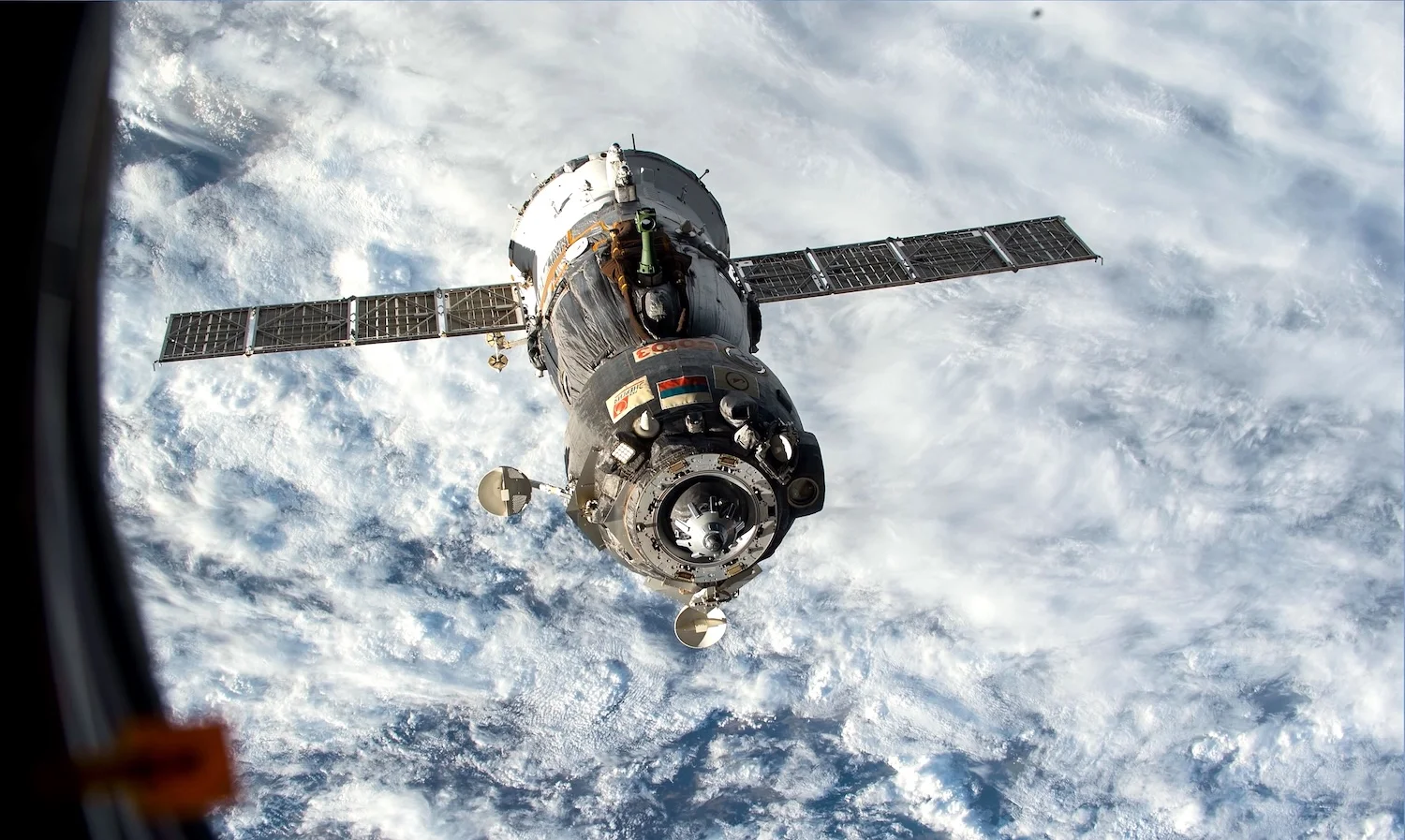 Soyuz TMA-15M spacecraft undocks from the ISS
Soyuz TMA-15M spacecraft undocks from the ISS
Headquarters: Moscow, Russia
Annual Budget: $1.5 billion+
Employees: 150,000+
Competitive Edge: Reliability and safety record, Geographic advantage
Roscosmos inherits the technological legacy of the Soviet space program, which began in the 1950s and laid the foundation for modern space exploration.
The former Soviet Union launched Sputnik 1 in 1957, which was the first artificial satellite, and later sent Yuri Gagarin into orbit in 1961, the first human to travel into space. These milestones established the Soviet Union, and later Russia, as NASA’s first and fiercest rival during the Cold War space race.
Over the decades, Roscosmos (and its Soviet predecessors) achieved more than 3,300 successful launches, including pioneering interplanetary missions to Venus, Mars, and the Moon, as well as the world’s first space station program, culminating in the long-lived Mir station. [9]
Today, Roscosmos manages both civilian and military space operations, overseeing everything from rocket manufacturing to crewed missions aboard the International Space Station (ISS).
Although NASA leads in deep-space exploration and advanced robotics, Roscosmos remains dominant in orbital launch experience and crewed mission reliability. Its Soyuz program served as NASA’s sole human space access route between 2011 and 2020, following the Space Shuttle’s retirement.
According to a report by Interfax, Russia’s Finance Ministry has approved $47.3 billion to fund the country’s national space program. This budget will cover activities through 2036.
Roscosmos is actively planning to build its own orbital station to replace or complement its participation in ISS. The schedule includes launching the first research and power module in 2027, followed by nodal, gateway, and baseline modules by around 2030, and further modules by 2031-2033. [10]
A national project to develop a multi-satellite orbital constellation is also underway. The target for the state constellation is around 650 satellites by 2030. These satellites are intended for communications, navigation, Earth monitoring, etc.
2. European Space Agency (ESA)
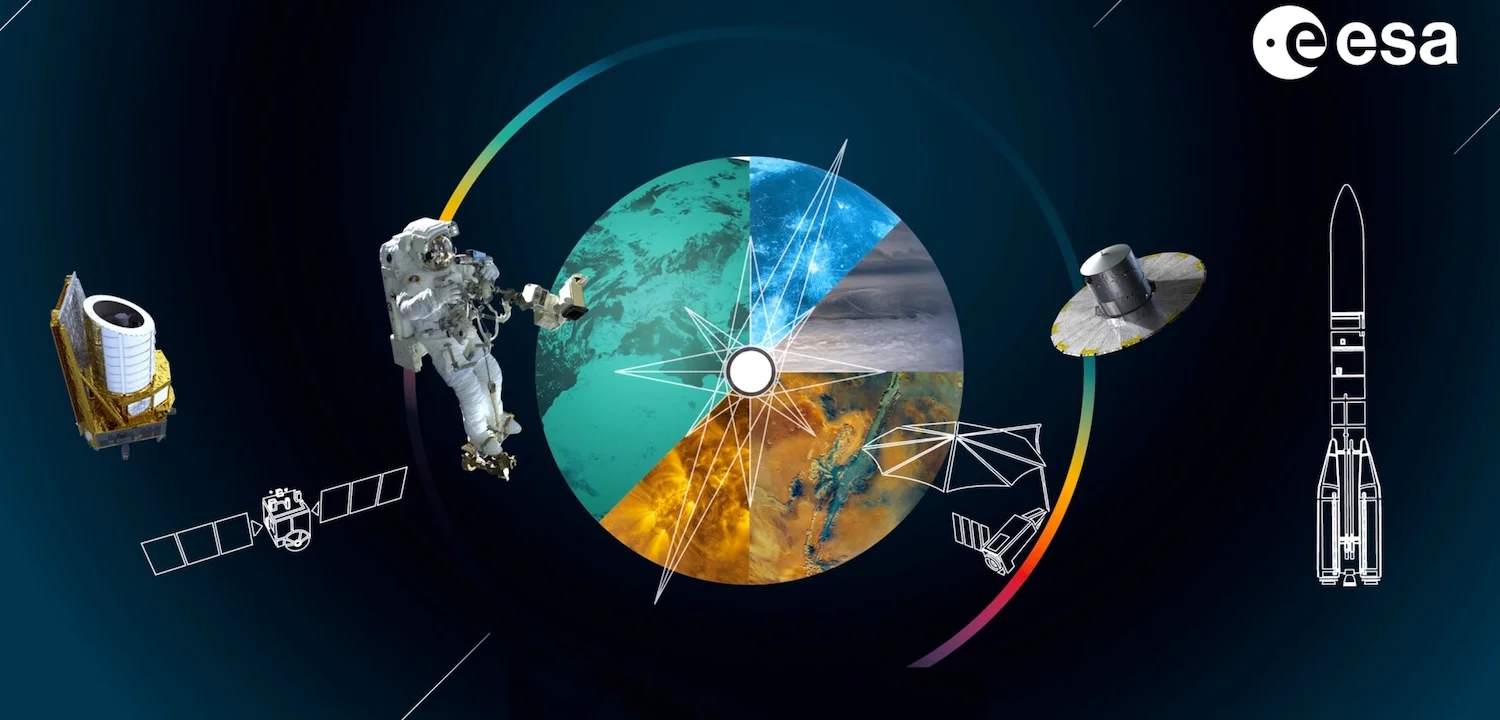
Headquarters: Paris, France
Annual Budget: $9.08 billion
Employees: 2,540+ (direct staff)
Competitive Edge: Scientific excellence & Launch autonomy
ESA is one of the most influential and collaborative space organizations in the world, representing 23 member nations across Europe.
ESA’s activities encompass Earth observation, planetary science, human spaceflight, satellite navigation, and launch services. It currently manages more than 20 active missions, with a dozen new missions in development for future launch.
Their achievements are remarkable in scale and complexity. ESA developed the Ariane rocket family, which has successfully completed more than 260 launches, becoming one of the world’s most reliable commercial launch systems.
Its Rosetta mission made history in 2014 by performing the first-ever comet landing, while the Mars Express and ExoMars programs positioned Europe as a serious player in interplanetary exploration.
ESA also co-manages the Copernicus Earth Observation Programme, which generates over 25 terabytes of environmental data per day, and the Galileo navigation system, Europe’s independent alternative to GPS. [11]
While NASA often leads in terms of scale, ESA’s collective European model excels in precision engineering and scientific research. Unlike NASA’s centralized US system, ESA’s multinational framework encourages collaboration across industries and countries, giving it an unmatched depth of expertise and technological diversity.
1. China National Space Administration (CNSA)
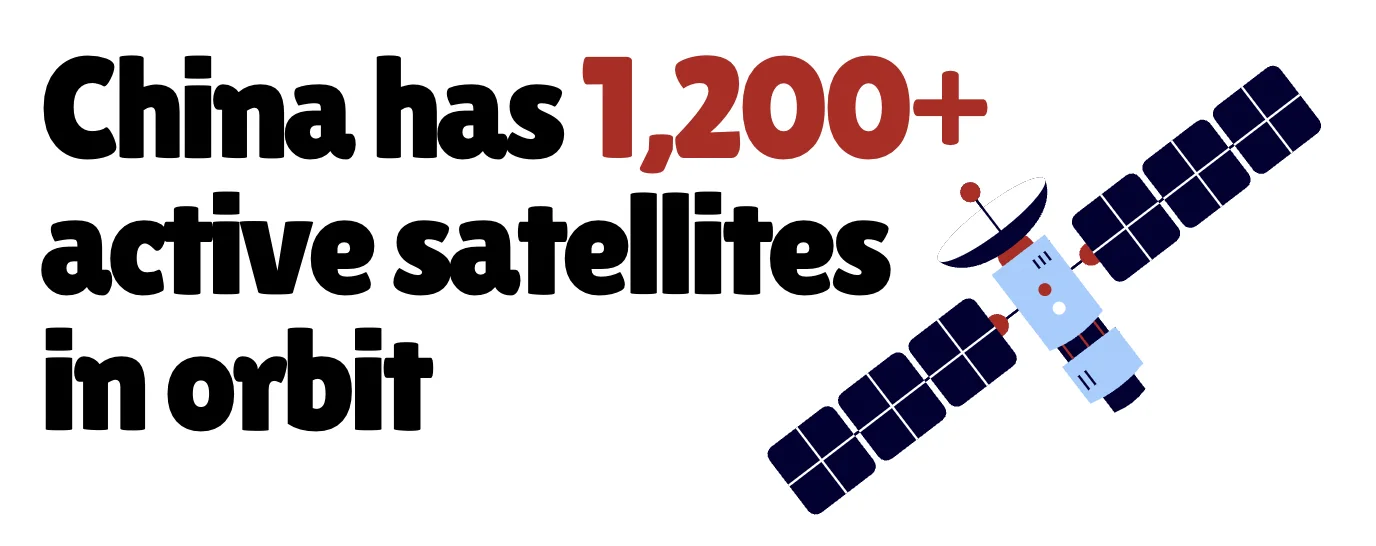
Headquarters: Beijing, China
Annual Budget: $19 billion+
Employees: 150,000+
Competitive Edge: Centralized planning & Rapid execution
Established in 1993, CNSA has transformed China from a regional aerospace participant into one of the world’s top three space powers, rivaling NASA and ESA in scope and capability.
Over the past three decades, China’s space investments have surged dramatically, with CNSA’s annual budget estimated at $19 billion. In 2024 alone, the agency performed 68 orbital launches, successfully carrying 270 satellites into orbit.
CNSA oversees a wide range of missions, including lunar exploration (Chang’e programme), Mars/deep-space probes (Tianwen), building and operating the Chinese Space Station (Tiangong), Earth observation, satellite navigation (BeiDou), and remote sensing.
Looking forward, CNSA’s roadmap includes crewed lunar landings by 2030, a permanent lunar base (International Lunar Research Station) in collaboration with Russia, and deep-space missions to Jupiter and asteroids.
Compared to NASA, CNSA’s strength lies in speed, scale, and national coordination. Its model is centrally planned, involving coordination with state-owned enterprises like the China Aerospace Science and Technology Corporation (CASC).
In planetary exploration, both agencies pursue Mars and lunar science, but with contrasting motivations. NASA’s Artemis program seeks to establish an international lunar base with allies, while CNSA, through its International Lunar Research Station (ILRS) initiative, is forging partnerships with Russia, Venezuela, and other emerging space nations.
This rivalry is extending into global space diplomacy, as countries increasingly choose alignment with either NASA-led or CNSA-led missions.
Noteworthy Point
SpaceX, Blue Origin, United Launch Alliance, Rocket Lab, Virgin Galactic, and other private space companies are not direct competitors to NASA. While NASA is dedicated to scientific research, space exploration, and developing technology for the public good, these private firms primarily focus on creating and selling space transportation and commercial services for profit.
Instead of competing, they collaborate. For example, NASA funds SpaceX through contracts (like Commercial Crew and Cargo Programs) to carry out missions that support NASA’s goals, such as transporting astronauts to the International Space Station (ISS).
Read More
- 12 SpaceX Competitors In The World
- 31 Amazing NASA Inventions We Use In Our Daily Life
- NASA’s 10 Coding Rules for Writing Safety-Critical Programs
- Joey Roulette, NASA announces further delays in Artemis moon missions, Reuters
- Report, The $1.8 trillion opportunity for global economic growth, McKinsey Insights
- Meghan Bartels, UAE’s Hope probe enters orbit around Red Planet, Space
- Domingos Zaparolli, Departing from Alcântara offers fuel savings of up to 30%, Revista Pesquisa
- Space News, South Korea uses homegrown rocket to put satellite into orbit, Al Jazeera
- CSA, Space technologies to bolster Canadian sovereignty and resilience, Government of Canada
- Christophe Bonnal, CNES technical considerations on space traffic management, ScienceDirect
- Geeta Pandey, Chandrayaan-3: India makes historic landing near Moon’s south pole, Geeta Pandey
- Aerospace & Defense Manufacturing, Orbital space launches from the Soviet Union and Russia, Statista
- Space News, Russia plans to create core of new space station by 2030, Reuters
- Observer, Revealing hidden land patterns with AI and Copernicus, EUSpace


